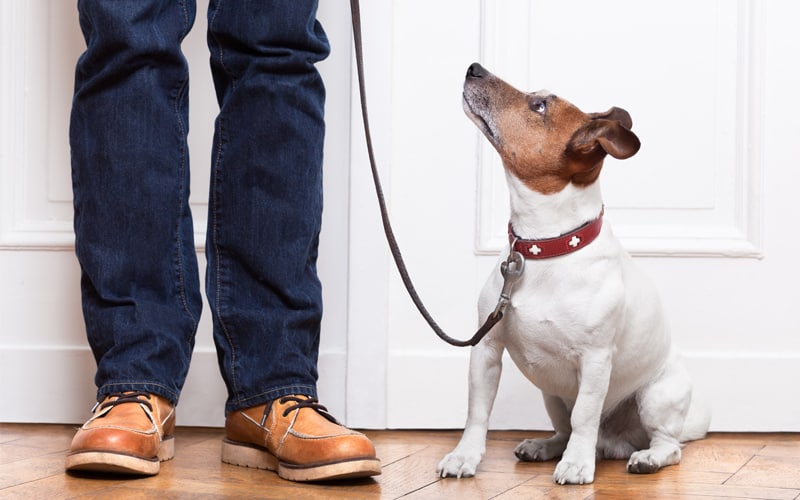9 Tips to Train Your Dog
The most effective key to dog discipline is strong, disciplined training. When a dog knows what its boundaries are and what behavior is acceptable they will try to please their owner by exhibiting that behavior. Dogs can exert their will for a number of reasons: they’re bored, testing their limits, feel neglected by the attention of a new pet, or baby and for many other reasons. Discipline is not the same as punishment.
Punishment carries a negative connotation, while discipline is an important tool in training your dog. Proper discipline teaches your dog what behavior you expect from him and which behaviors you will not tolerate. If incorrectly administered, however, discipline can cause neurotic behavior and behavioral problems.
1. Adapt
All dogs are different. Some are easy-going and attentive while others are stubborn and difficult. If something isn’t working, don’t be afraid to adapt. Pay close attention to your dog’s behavior and adjust your training accordingly. If you notice that raising your voice only gets your dog more excited, perhaps a time-out is a more effective way of associating disapproval with a certain behavior.
2. Behavior
Dog training is about rewarding good behavior while deterring bad behavior. When a dog performs a desired action (sit or stay) when asked to do so, he must be rewarded. Try giving your dog a high reward treat immediately after it follows a command, as this behavior will become synonymous with a positive action. Praising them with an emphatic “good boy/girl!” is also a simple reward that’ll strengthen your bond as your dog learns right from wrong.
3. Consistency
Nothing confuses dogs more than sending mixed signals. Make sure everyone in the household is on the same page as to what your pooch is permitted to do. If he’s not allowed to jump on the bed, all family members must have the same reaction when he does so. If one person uses the word “stop” and another uses the word “no”, your dog may take longer to understand your disapproval.
4. Exercise
Dogs have a great amount of energy, but when they start running and jumping all over the place you may have a really hard time getting them to pay attention. A long walk or healthy jog with your furry friend will tire him out and make him that much more attentive. Exercise can also be a great time to work with your dog on recall and other important commands.
5. Help
Whether you’re first-time pet parents or experienced owners facing challenges, dog training can be difficult to manage, but don’t get discouraged! If you’re overwhelmed, don’t hesitate to consult professionals or find expert dog trainers in your local area. Whether you’re just looking for a beginners class or some advanced training, a few sessions can go a long way to improving your dog’s behavior.
6. Never
Never hit or strike your dog it’s the least effective way and most insensitive way to discipline a dog. Dogs don’t understand that hitting is meant to correct a behavior. Your dog will just become afraid of you, nervous and aggressive. If your dog has a potty accident, never rub his nose in it. Dogs generally don’t urinate or defecate out of spite, so they don’t understand when you do this. Dogs only understand a few commands, so a big speech or yelling serves no benefit.
7. “No”
“No” is a disciplinary word, so use it with care. When disciplining your dog and telling him “no,” never use his name to get his attention. Your dog should only associate his name with positive reinforcement. When your dog misbehaves, get his attention by standing in front of him or gently touching his neck with your fingers, and then tell him “no” in a stern voice. You want to be firm, but not angry.
8. Patience
Don’t expect your dog to immediately respond to all your orders. Dogs are creatures of habit. It takes time for things to really sink in. It’s only with repetition, consistency, and patience that your rules will slowly become their daily habits. Your patience will be rewarded the day your dog sits or returns to you when called.
9. “Time Out”
Before welcoming your new dog in his forever home set clear boundaries and provide your dog with its own personal area. A crate is an ideal tool for offering your dog a place where they can feel safe and comfortable. When your dog is caught engaging in bad behavior one good discipline is put your dog in their crate for 15 – 20 minute “time out.” The key to crate time out working is that it is done immediately and after some moderate period of time let your dog out of the crate.
Choose a discipline method that works well with your dog’s temperament and size. The idea is to break the bad behavior, not break the spirit. Some dogs are very sensitive. Pay attention to your dog’s response to training and discipline habits and you will find the best path to discipline for your dog.










I think it’s a complete guideline for the beginners who are going to own a dog.
Yes, you are right. These are excellent tips for beginners. I hope more tips will be coming up soon.
My sister just got a husky puppy and, since this is her first dog, she doesn’t know how to train it. She would really appreciate your advice to get help from an expert or attend a dog training class. Training her dog will probably be easiest now while he is still young, so I will suggest she start looking today.